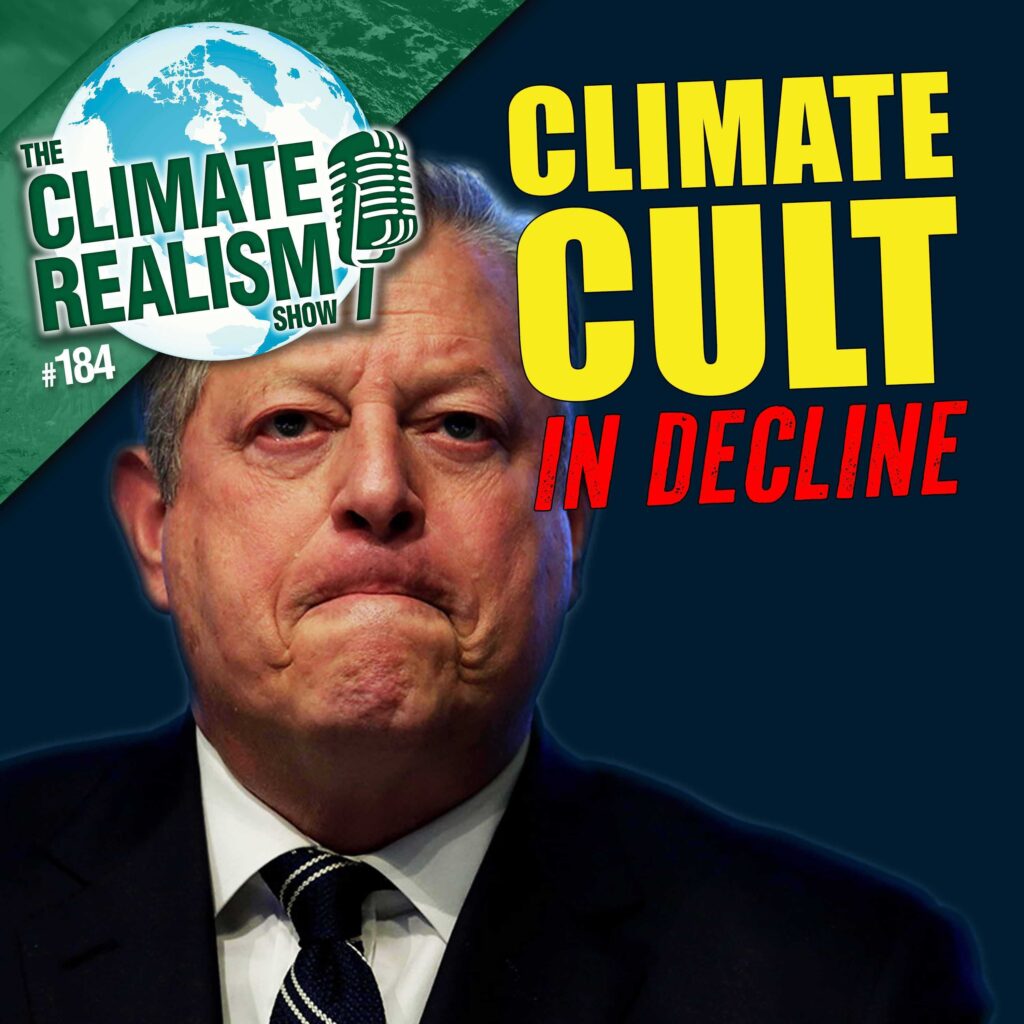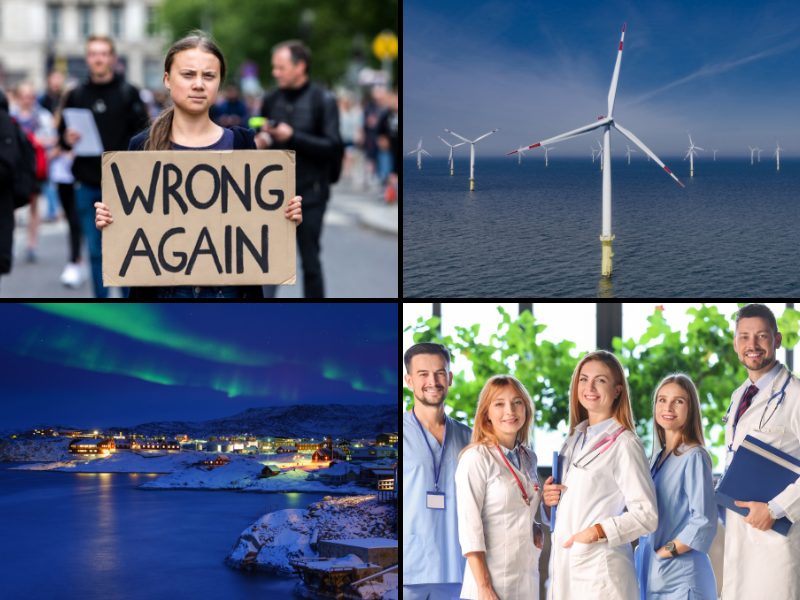At least some journalists and scientists appear to be finally catching on to the fact (or at least finally admitting the truth) that scientists and agencies promoting the theory humans are causing a climate crisis have been wildly exaggerating, if not outright lying about, the likelihood the most extreme climate harms will occur.
Prior to the of the release of Fifth Assessment report from the Intergovernmental Panel on Climate Change (IPCC) on the purported human causes of climate change, researchers developed four different scenarios, referred to as “Representative Concentration Pathways” (RCPs), to describe how carbon emissions might change through 2100. The most extreme of these scenarios, RCP8.5, projected a 500 percent increase in the use of coal, which it referred to as the “business as usual” scenario. IPCC projected RCP8.5 could result in a warming of more than 6 degrees Celsius by 2100, resulting in all manner of catastrophic consequences.
More than 2,000 research papers, including Fourth National [United States] Climate Assessment (NCA4) produced in late 2018 by holdovers from the Obama administration, cited RCP8.5, treating it as the most likely outcome of the current rate of human greenhouse gas emissions. The mainstream media characterized these reports as authoritative and used them to shut out of news reports covering climate change anybody who disagreed with the IPCC’s claims. They used the most extreme scenario to claim continued debate was not just unjustified but, because of the seriousness of the purported crisis, dangerous.
RCP8.5 was never a likely outcome, and the IPCC modelers knew that when they produced it. Thanks to improved efficiencies and the increasing use of natural gas and renewable energy sources, global coal use was slowing in developing countries, and declining in the developed world, even before IPCC produced its various RCP scenarios, including the extreme “business as usual” RCP8.5. In fact, IPCC acknowledged, but did not publicize, the fact that RCP8.5 had only a 10 percent chance of becoming reality at the time it was produced—more recent estimates place its chance of occurring at less than 3 percent. For political and economic reasons, deep-state bureaucrats, crony capitalists, progressive politicians, the press, and government-funded scientists treated RCP8.5 as if it were the most likely outcome if governments did not impose radical restrictions on greenhouse gas emissions.
The scientists involved in producing RCP8.5 now say they didn’t do a good job of communicating the improbability of its projections of disaster coming to pass. Gee, ya think? I would argue careful and malign calculation led to their silence for more than four years in allowing the least probable of the climate scenarios they produced to be treated as the most likely.
“What we’re arguing is that we’ve been misusing the worst climate change scenario,” Zeke Hausfather, director of climate and energy at the Breakthrough Institute in California, told the BBC. “So what originally was a sort of worst-case [scenario] with less than 10 percent chance of happening is today, exceedingly unlikely.”
As to fears raised by activists such as Extinction Rebellion that the cumulative effects of all the climate catastrophes projected in RCP8.5 could result in the extinction of humanity if we don’t end fossil fuel use right away, Hausfather told the BBC, “There’s never been that much evidence that climate change is going to literally cause the extinction of the human race.” Well, that’s a relief, or at least it would be if such an absurd result had ever been possible.
As documented by Marlo Lewis, a senior fellow at the Competitive Enterprise Institute, “Contrarians have been documenting the implausibility of RCP8.5 for years, citing the very research allegedly confusing thousands of scientists.” Lewis cites numerous peer-reviewed articles demonstrating the folly of treating RCP8.5 as if it were in any way representative of reality. Of course, truth being extremely inconvenient for their political agenda, climate activists, politicians, the press, business special interests, and scientists benefitting from scaremongering conveniently ignored this research and in fact tried their hardest to suppress it.
It’s also worth noting, as dire as RCP8.5 projections of economic harm were, even they did not amount to a disaster. Stan Liebowitz, Ph.D., the Ashbel Smith Professor of Managerial Economics at the University of Texas at Dallas, examined NCA4’s projections of economic harm using RCP8.5. “NCA4 purportedly provides ‘a thorough examination of the effects of climate change on the United States,’ [estimating] the damage the nation will experience from climate change in the year 2090,” writes Liebowitz.
NCA4 estimates the dollar value of 22 different categories of potential damage in the United States from global warming in the year 2090, including destruction from rising oceans, mortality caused by excessive heat or poor air quality, additional harm from diseases such as West Nile virus, and the costs of repairing roads and bridges damaged by floods or erosion. NCA4 estimates the total cost of damages resulting from climate change in 2090 will top $507.6 billion.
“A value of $507.6 billion seems huge to individuals unfamiliar with large economic magnitudes (such as GDP) and appears to have most journalists virtually fainting from fright,” writes Liebowitz. “The simplest way to put the number in perspective is to compare this predicted 2090 loss with the predicted 2090 GDP [approximately $70 trillion), … leading to the clear result predicted climate change damages in 2090 represent slightly more than 0.7 percent of U.S. GDP. Thus the damage from climate change in NCA4’s worst-case scenario, according to our ‘best scientists and experts,’ is less than 1 percent of U.S. GDP in 2090.”
What is true of the United States is equally true of the world as a whole. To paraphrase President Franklin Delano Roosevelt, “We have nothing to fear but the fear induced by climate hype itself.”
— H. Sterling Burnett
SOURCES: BBC; The Heartland Institute; Competitive Enterprise Institute
IN THIS ISSUE …
Nature may prevent carbon dioxide from doubling … North Atlantic sea level trends dominated by nature … Half of Arctic warming due to unexpected culprit
NATURE MAY PREVENT CARBON DIOXIDE FROM DOUBLING
In a new analysis, Roy Spencer, Ph.D., a principal research scientist at the University of Alabama in Huntsville, shows using a reasonable carbon budget model, humans are unlikely to double the carbon dioxide in the atmosphere from preindustrial levels, and we will thus avoid the much-hyped runaway anthropogenic climate catastrophe.
“Even if we knew exactly what humanity’s future carbon dioxide emissions were going to be, how much Mother Nature takes out of the atmosphere is seldom discussed or questioned. This is the domain of global carbon cycle models which we seldom hear about,” writes Spencer. “As we produce more and more carbon dioxide, the amount of carbon dioxide removed by various biological and geophysical processes also goes up.”
Spencer ran a simple carbon budget model using Energy Information Administration estimates of the energy-based emissions of carbon dioxide being added to the atmosphere (0.6 percent per year through 2050) and the amount nature removes from the atmosphere annually, based on carbon dioxide concentration measurements taken at the Mauna Loa observatory in Hawaii.
Spencer’s model tracks “the slowly increasing trend in the apparent yearly fractional removal of carbon dioxide emissions” recorded at Mauna Loa, performing better than complex models that include estimates of purported feedbacks but fail to account for carbon dioxide uptake.
With alarmist being forced to backtrack on the most extreme representative concentration pathway, RCP8.5, as the lead essay above discusses, Spencer’s analysis indicates RCP6 also projects a much larger than justified expected increase in carbon dioxide concentrations. If Spencer is right, carbon dioxide concentrations will peak or reach equilibrium at approximately 541 parts per million in the mid-2200s, falling between the projections of RCP2.5 and RCP 4.5 for 2100. If all other things are held equal, that would mean an additional warming of between 1 and 1.8 degrees Celsius above preindustrial levels by 2100—below the temperature estimates alarmists say would result in a climate catastrophe—even without restricting fossil fuel use.
SOURCE: Dr. Roy Spencer
NORTH ATLANTIC SEA LEVEL TRENDS DOMINATED BY NATURE
A new study in the journal Scientific Reports, published by Nature, finds recent changes in sea levels in the North Atlantic are dominated by natural factors, primarily oceanic circulation changes and shifts in wind patterns. The study also found sea levels in the North Atlantic, on average, have declined since 1993, instead of rising at an increasing rate as projected by climate models.
“Oceanic climate variability in the North Atlantic is known to be dominated by decadal-to-multidecadal fluctuations, that have profound regional and global climate impacts,” the authors write.
Using satellite altimetry, a mode of measuring sea levels in use since 1993, the authors found sea levels in the North Atlantic rose by approximately +3.9 millimeters (mm) annually from 1993 through 2004. However, between 2005 and 2016, sea levels “plummeted” by approximately -7.1 mm per year, tracking decadal changes in various oceanic vortexes in the subpolar region.
As a result, instead of rising at an increasingly rapid rate as projected by climate models, during a period of increasing atmospheric carbon dioxide concentrations, over the 24 year period from 1993 through 2016, sea levels in the North Atlantic fell by approximately -38.4 mm.
Because climate models are unable to account for ocean circulation patterns and interactions, their projections of even the directions of changes in sea level rise, much less predictions of specific amounts of rise (or fall), should not be relied on when making energy policy decisions.
SOURCES: Nature
HALF OF ARCTIC WARMING DUE TO UNEXPECTED CULPRIT
Temperatures in the Arctic have risen by almost double the amount of warming experienced by the world as a whole over the past century. Climate models attribute this warming almost entirely to increases in carbon dioxide from human activities, but a study published in Nature Climate Change indicates CFCs and other ozone-depleting refrigerants and propellants have caused approximately half of the Arctic’s warming.
On a molecule-by-molecule basis, ozone-depleting gases trap much more heat than carbon dioxide does. In the study, researchers from universities in Canada, Switzerland, and the United States ran climate model simulations with and without accounting for CFC emissions. Absent CFCs, the models produced an average Arctic warming of 0.82 degrees Celsius, well below the measured average temperature increase between 1955 and 2005. When the researchers included CFC increases in the model simulations, the projected Arctic temperature increased to 1.59 degrees Celsius, in line with the actual measured increase.
These chemicals were banned by the 1987 Montreal Protocol, and as a result their concentrations in the atmosphere have begun to decline, although at a slower rate than they otherwise would because some countries, notably China, are cheating by still using the banned chemicals.
Because ozone-depleting substances linger in the atmosphere for relatively short periods of time and their concentrations are declining, the researchers are hopeful the Arctic’s recent warming and losses of ice in the region should slow if not halt entirely.
“Our findings also have implications for the future because the phase-out of [ozone-depleting substances], which is well underway, will substantially mitigate Arctic warming and sea-ice melting in the coming decades,” the study states.
If this study is correct about the relative role CFCs played compared to carbon dioxide in the recent warming in the Arctic, it is also likely climate models understate the impact of CFCs globally. That would be still another factor indicating climate models grossly overstate the sensitivity of the Earth’s temperature to carbon dioxide concentrations, and as CFCs decline, the rates of any further temperature increases should decline as well.
SOURCES: European Scientist; Science





